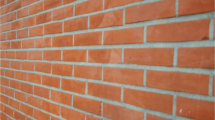Abstract
Texture classification is an important aspect of many digital image processing applications such as surface inspection, content-based image retrieval, and biomedical image analysis. However, noise and compression artifacts in images cause problems for most texture analysis methods. This paper proposes the use of features based on the human visual system for texture classification using a semisupervised, hierarchical approach. The texture feature consists of responses of cells which are found in the visual cortex of higher primates. Classification experiments on different texture libraries indicate that the proposed features obtain a very high classification near 97%. In contrast to other well-established texture analysis methods, the experiments indicate that the proposed features are more robust to various levels of speckle and Gaussian noise. Furthermore, we show that the classification rate of the textures using the presented biologically inspired features is hardly affected by image compression techniques.
Similar content being viewed by others
References
Aschkenasy, S.V., Muntwyler, J., van der Loo, B., Oechslin, E., Jenni, R.: Texture analysis in digitally-acquired echocardiographic images: The effect of JPEG compression and video storage. Ultrasound Med. Biol. 31(3), 361–366 (2005)
Bovik, A.C., Clark, M., Geisler, W.S.: Multichannel texture analysis using localized spatial filters. IEEE Trans. Pattern Anal. Mach. Intell. 12(1), 55–73 (1990)
Brodatz, P.: Textures: A Photographic Album for Artists and Designers. Dover, New York (1966)
Chellappa, R., Chatterjee, S.: Classification of textures using Gaussian Markov random field. IEEE Trans. Acoust. Speech Signal Process. 33, 959–963 (1985)
Clark, M., Bovik, A.: Texture segmentation using Gabor modulation/demodulation. Pattern Recogn. Lett. 6, 261–267 (1987)
Clausi, D.A., Jernigan, M.E.: Designing Gabor filters for optimal texture separability. Pattern Recogn. 33(11), 1835–1849 (2000)
Daugman, J.G.: Uncertainty relation for resolution in space, spatial frequency, and orientation optimization by two-dimensional visual cortical filters. J. Opt. Soc. Am. 2, 1160–1169 (1985)
Fountain, S.R., Tan, T.N.: Extraction of noise robust rotation invariant texture features via multichannel filtering. In: Proceedings of the 1997 International Conference on Image Processing, vol. 3, pp. 197–200 (1997)
Hall, C.F., Hall, E.L.: A nonlinear model for the spatial characteristics of the human visual system. IEEE Trans. Syst. Man Cybern. 7(3), 161–170 (1977)
Iakovidis, D.K., Keramidas, E., Maroulis, D.: Fuzzy local binary patterns for ultrasound texture characterization. In: Proc. Image Analysis and Recognition, 5th International Conference (ICIAR 2008). Lecture Notes in Computer Science, vol. 5112, pp. 750–759. Springer, Berlin (2008)
Independent JPEG Group: http://www.ijg.org/
Jones, J., Palmer, A.: An evaluation of the two dimensional Gabor filter model of simple receptive fields in cat striate cortex. J. Neurophysiol. 58, 1233–1258 (1987)
Kachouie, N.N., Alirezaie, J.: Optimized multichannel filter bank with flat frequency response for texture segmentation. J. Appl. Signal Process. 12, 1834–1844 (2005)
Kohonen, T.: Self-organizing Maps. Springer, Berlin (1997)
Kruizinga, P., Petkov, N.: Nonlinear operator for blob texture segmentation. In: Cetin, A.S., et al. (eds.) Proc. NSIP’99, IEEE Workshop on Nonlinear Signal Processing, vol. 2, pp. 881–885 (1999)
Lourens, T., Barakova, E., Okuno, H.G., Tsujino, H.: A computational model of monkey cortical grating cells. Biol. Cybern. 92(1), 61–70 (2005)
Ma, H., Doermann, D.S.: Font identification using the grating cell texture operator. In: Proceedings of Document Recognition and Retrieval XII, pp. 148–156 (2005)
Martens, G., Poppe, C., Van de Walle, R.: Enhanced grating cell features for unsupervised texture segmentation. In: Performance Evaluation for Computer Vision: 31st AAPR/OAGM Workshop 2007, Osterreichische Computer Gesellschaft, Performance Evaluation for Computer Vision, pp. 9–16 (2007)
Martens, G., Poppe, C., Lambert, P., Van de Walle, R.: Unsupervised texture segmentation and labeling using biologically inspired features. In: Proceedings of the 2008 IEEE 10th Workshop on Multimedia Signal Processing, pp. 159–164. IEEE Signal Processing Society (2008)
Matlab Image Processing Toolbox 5.1, see: http://www.mathworks.com/products/image/
MeasTex Image Texture Database and Test Suite, Version 1.1, see: http://www.texturesynthesis.com/meastex/meastex.html
Murino, V., Ottonello, C., Pagnan, S.: Noisy texture classification: A higher-order statistics approach. Pattern Recogn. 31(4), 383–393 (1998)
Ojala, T., Pietikäinen, M., Harwood, D.: A comparative study of texture measures with classification based on feature distributions. Pattern Recogn. 29(1), 51–59 (1996)
Ojala, T., Pietikäinen, M., Mäenpää, T.: Multiresolution gray-scale and rotation invariant texture analysis with local binary patterns. IEEE Trans. Pattern Anal. Mach. Intell. 24(7), 971–987 (2002)
Picard, R.W., Minka, T.P.: Vision texture for annotation. Multimedia Syst. 3(1), 3–14 (1995)
Pollen, D.A., Ronner, S.F.: Visual cortical neurons as localized spatial frequency filters. IEEE Trans. Syst. Man Cybern. 13(5), 907–916 (1983)
Vesanto, J., Himberg, J., Alhoniemi, E., Parhankangas, J.: Self-organizing map in Matlab: The SOM toolbox. In: Proceedings of the Matlab DSP Conference, pp. 35–40 (2000)
von der Heydt, R., Peterhans, E., Dürsteler, M.R.: Periodic-pattern-selective cells in monkey visual cortex. J. Neurosci. 12(4), 1416–1434 (1992)
Zhang, G., Ma, Z.M., Cai, Z., Wang, H.: Texture analysis using modified computation model of grating cells in content-based medical image retrieval. In: Lecture Notes in Computer Science, vol. 4989, pp. 125–132. Springer, Berlin (2008)
Author information
Authors and Affiliations
Corresponding author
Rights and permissions
About this article
Cite this article
Martens, G., Poppe, C., Lambert, P. et al. Noise- and compression-robust biological features for texture classification. Vis Comput 26, 915–922 (2010). https://doi.org/10.1007/s00371-010-0455-9
Published:
Issue Date:
DOI: https://doi.org/10.1007/s00371-010-0455-9




